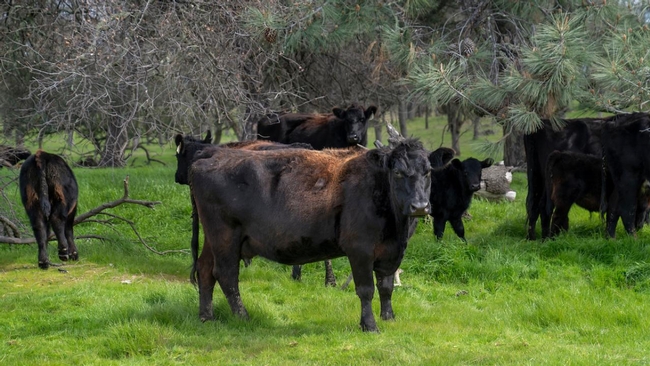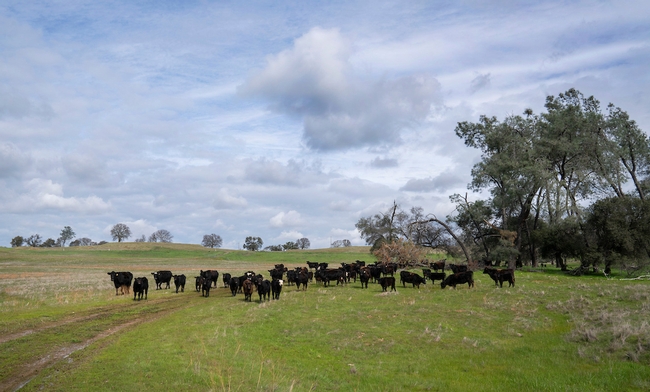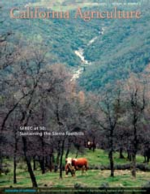Posts Tagged: Beef
California’s local meat suppliers struggle to stay in business
UC Davis report suggests ways to build resilience
The University of California, Davis, Food Systems Lab has released a white paper showing the need to support California's small and mid-scale meat suppliers and processors in order to build a more resilient meat supply chain. It describes how the meat supply chain and rural economies could benefit from regulatory changes and more collaboration among producers and other stakeholders in the system.
The pandemic shut down meat processing plants in 2020, as did recent ransomware attacks on JBS, the nation's largest meat supplier. Report authors said this highlights the need to support small- and mid-scale suppliers.
“COVID and the ransomware attacks put a spotlight on how the concentration of the meat supply chain increased vulnerability in the food system,” said report co-author Tom Tomich, founder of the UC Davis Food Systems Lab and distinguished professor in the Department of Environmental Science and Policy. “We need to level the playing field so small- and mid-scale farms have an easier way to bring their product to market.”
The report says the lack of access to slaughter facilities, limited capacity of cut and wrap facilities, and concentration of marketing channels create conditions in which small- and mid-scale farms and ranches struggle to stay in business.
“These challenges are exacerbated by policies that tilt the playing field against small operators. Fortunately, new state and national legislation and programs are developing that could increase resilience in our food systems,” says Michael R. Dimock, Roots of Change program director and lead author for the report. “We need cities and counties to help fix the problems because local land use policies often impede development of resilient supply chains.”
Lack of access and limited capacity
Smaller ranchers in California have limited access to slaughter and processing facilities. In the last 50 years, California has lost half of its federally inspected meat processing plants, and the remaining facilities are unable to meet demand. Many of the 46 USDA-certified slaughter plants operating in California are closed to smaller producers.
“This means that smaller ranchers must drive hundreds of miles to reach a facility or have to wait months due to limited capacity,” said Tomich.
The report said a combination of federal, state and private investments could provide a broader geographic distribution of plants of differing scales. It also suggests expanding mobile, on-farm slaughter operations for sheep, goats and hogs, similar to those for beef.
Regulatory barriers and opportunities
Complex inspection requirements and other regulatory barriers make it difficult for small- and mid-scale producers to compete with big suppliers. The report suggests California create its own meat inspection program equivalent to the federal program to serve smaller ranchers. Prioritizing public procurement of local, high-value meat would also help expand market access for smaller producers.
Broader benefits of smaller operators
The report notes other beneficial roles of small- and mid-scale livestock operations, apart from the potential to increase resilience in our food system. Livestock grazing is a cheap and effective way to reduce wildfire risk. Supporting local meat processing also helps rural economies and creates community-based jobs.
The report was based on 27 interviews with people representing a wide spectrum of activities and points of view within the meat supply chain throughout the state. Authors are Courtney Riggle, Allan Hollander, Patrick Huber and Thomas Tomich of the UC Davis Food Systems Lab, and Michael R. Dimock with Roots of Change.
Funding for the study came from the TomKat Foundation and USDA Hatch Program.
Where's the beef?
By assigning a simple, 15-digit identification number to cows, UC researchers can track each one from conception to carcass, garnering valuable data for studies on cattle fertility, genetics, and health, and helping to select breeding animals with desirable beef characteristics such as flavor and tenderness.
In today’s beef market, an individual cow may change ownership many times during its lifetime as it travels from the ranch of its birth, to stocker and feedlot, to slaughterhouse, and finally supermarket or steakhouse. In the process, valuable data is lost along with the ability to “trace back” particular steaks to the original cow.
For several years, UC Davis researchers have been attaching a round, electronic ear tag to each newborn calf in the research herd at the UC Sierra Foothill Research and Extension Center, in the California foothills northeast of Sacramento.
The ear tags contain each cow’s unique radio-frequency-identification number, which is scanned with an electronic wand; the system is similar to that used to keep track of packages being shipped overnight or library books. Cowhands use a handheld device to enter information when the cattle are processed, which is transmitted via remote-access antennae to centrally located computer databases.
The integrated data-collection system is being used to undertake sophisticated studies on cattle genetics, with the ultimate goal of improving cattle breeding. “The genotype of some beef and dairy cattle may be better suited to grass-based productions systems,” UC Davis Cooperative Extension Specialist Alison Van Eenennaam and colleagues write in the April-June 2010 issue of California Agriculture journal. “It may also be possible to select animals that are able to grow to given size using less feed, or that are more resistant to certain diseases.
“These technologies also have great potential to enable the production of safer, more nutritious animal products. They may also allow for the selection of animals with a decreased environmental footprint and improved animal welfare due to lower levels of disease.”

Herd manager Dan Myers enters cattle
information into hand-held device.
Happy cows produce healthy beef
Several studies suggest that grass-fed beef is more nutritious than conventional grain-fed beef, says a research review published in the March 2010 issue of Nutrition Journal.The review, written by three Chico State professors and UC Cooperative Extension livestock advisors Glenn Nader and Stephanie Larson, says the diet of exclusively grass gives beef a higher amount of Vitamin A and E precursors, boosts cancer-fighting antioxidants and reduces overall fat content.
"However, consumers should be aware that the differences in (fatty acid) content will also give grass-fed beef a distinct grass flavor and unique cooking qualities," the researchers wrote
In addition, the fat from grass-finished beef may have a yellowish appearance from the elevated carotenoid content. However, the slight changes in taste and appearance may be well worth getting used to.
Along with improved nutrients and lower fat in grass-fed beef, the product has a healthier lipid profile than its conventional counterpart. Health professionals worldwide recommend reduced consumption of saturated fat, trans fat and cholesterol. Grass-fed beef helps consumers meet the recommendation.
Raising cattle on the range also results in an improved omega-3/omega-6 fatty acid ratio in the beef, the authors said. A healthy diet should consist of roughly one to four times more omega-6 fatty acids than omega-3 fatty acids. However, the typical American diet tends to contain 11 to 30 times more omega-6 than omega -3, a phenomenon that may be a significant factor in the rising rate of inflammatory disorders in the United States.
Cooking grass-fed beef to perfection requires a few adjustments. For example, because it is low in fat, it should be coated with extra virgin olive oil, truffle oil or another light oil to enhance flavor and improve browning. The high protein and low fat levels mean the beef will usually require 30 percent less cooking time.
More cooking instructions plus information about grass-fed beef's health benefits, niche marketing, labeling and cost of production are available on the Grass-Fed Beef Web page, developed by the UC and Chico State researchers who wrote the research review for Nutrition.





